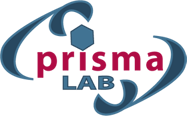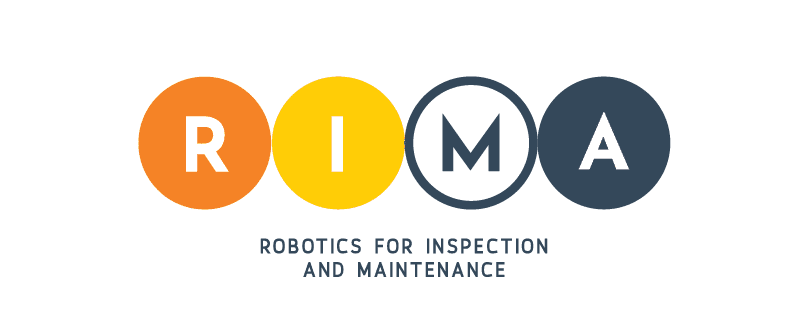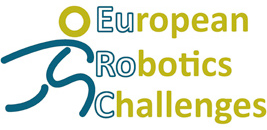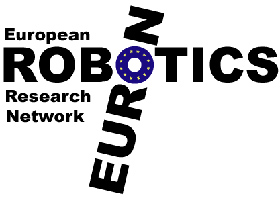As our field continues to expand and embrace the challenges of operation in the human world, robotics is revealing a much wider range of applications and involving diverse scientific disciplines such as biomechanics, neuroscience, haptics, animation, surgery, and sensor networks among others. Today, new communities of researchers and developers are forming, with growing connections to the core of robotics research. A strategic goal for our community is one of outreach and scientific cooperation across all regions and organizations. Our common endeavour as roboticists to reach this goal certainly holds the promise of exciting progress toward new frontiers. Cooperation between academia and industry is crucial to advance know-how and to pursue innovation in joint technology and application development in robotics. The knowledge transfer within and outside the robotics community is enhanced only through a significant increase of communication, dissemination and networking activities.
euROBIN
- European Robotics and AI Network
- July 2022 ‒ June 2026
- 11,500,000 €
- website
DIH2
- A Pan European Network of Robotics DIHs for Agile Production
- January 2019 ‒ June 2023
- 15,999,942 €
- website
RIMA
- Robotics for Infrastructure Inspection and MAintenance
- January 2019 ‒ June 2023
- 16,048,605 €
- website
ROCK EU2
- Robotics Coordination Action for Europe Two
- February 2016 ‒ January 2018
- 2,499,463 €
EUROC
- European Robotics Challenges
- January 2014 ‒ June 2018
- 16,500,000 €
- website
ROCK EU
- Robotics Coordination Action for Europe
- January 2013 ‒ July 2016
- 2,990,000 €
- website
The European robotics community has grown significantly over the last few years. At the same time public funding enabled the community to become more organised on both the research and the industrial side and to develop a strategic research agenda. Research and industry stakeholders have decided to combine their portfolio of activities and member base within a new non-profit organisation, euRobotics AISBL, which intends to engage in a contractual Public-Private Partnership (PPP) with the European Commission (EC). The main players behind this success story have joined ROCK EU to address the most important challenges for the coming three to five years: professional coordination of technology roadmapping and implementation of innovation activities, fostering collaboration among all stakeholders of European robotics, promoting European robotics. The project has the ambition to create sustainable solutions for these challenges, building on the previous successful instruments.
EU ROBOTICS
- European Robotics Coordination Action
- January 2010 ‒ December 2012
- 1,999,000 €
- website
ECHORD
- European Clearing House for Open Robotics Development
- January 2009 ‒ December 2013
- 18,969,760 €
- website
ETHICBOTS
- Emerging Technoethics of Human Interaction with Communication, Bionic, and Robotic Systems
- November 2005 ‒ October 2007
- 420,000 €
- website
ETHICBOTS coordinates a multidisciplinary group of researchers into AI, robotics, anthropology, moral philosophy, philosophy of science, psychology, and cognitive science, with the common purpose of identifying and analyzing techno-ethical issues concerning the integration of human beings and artificial entities. Three kinds of integration are analyzed: human‒softbot integration, as achieved by AI research on information and communication technology; human‒robot, non-invasive integration, as achieved by research on autonomous systems inhabiting human environments; physical, invasive integration, as achieved by bionic research. Crucial ethical issues in these areas include: preservation of human identity and integrity; applications of precautionary principles; economic and social discrimination; artificial system autonomy and accountability; responsibilities for warfare applications; nature and impact of human‒machine cognitive and affective bonds on individuals and society.
EURON
- European Robotics Network
- May 2004 ‒ April 2008
- 3,340,000 €
- website
Europe is already today the leader in industrial robotics. At the same time Europe is experiencing a significant aging of society. This change in demographics will have consequences on industry, style of living, entertainment, etc. A key contributor to the development of aids for everyday life (at the workplace and in the homes) will be robotics technology. The topic is, however, far wider than traditional industrial robotics, it involved direct brain interfaces, service robotics, etc. In addition, the area is not only in need of new research and development, but also human resources to participate and drive the innovation process. The project outlines a work program to ensure that the "wider" area of robotics is addressed in an adequate manner to allow for continued growth. The work-plan involves activities on research coordination, training and education, dissemination efforts, collaboration with end-user industries, and research projects on emerging problems.
EURON
- European Robotics Research Network
- December 2000 ‒ April 2004
- 1,035,000 €
- website
Europe is already today the leader in industrial robotics. At the same time Europe is experiencing a significant aging of society. This change in demographics will have consequences on industry, style of living, entertainment, etc. A key contributor to the development of aids for everyday life (at the workplace and in the homes) will be robotics technology. The topic is, however, far wider than traditional industrial robotics, it involved direct brain interfaces, service robotics, etc. In addition, the area is not only in need of new research and development, but also human resources to participate and drive the innovation process. The project outlines a work program to ensure that the "wider" area of robotics is addressed in an adequate manner to allow for continued growth. The work-plan involves activities on research coordination, training and education, dissemination efforts, collaboration with end-user industries, and research projects on emerging problems.










